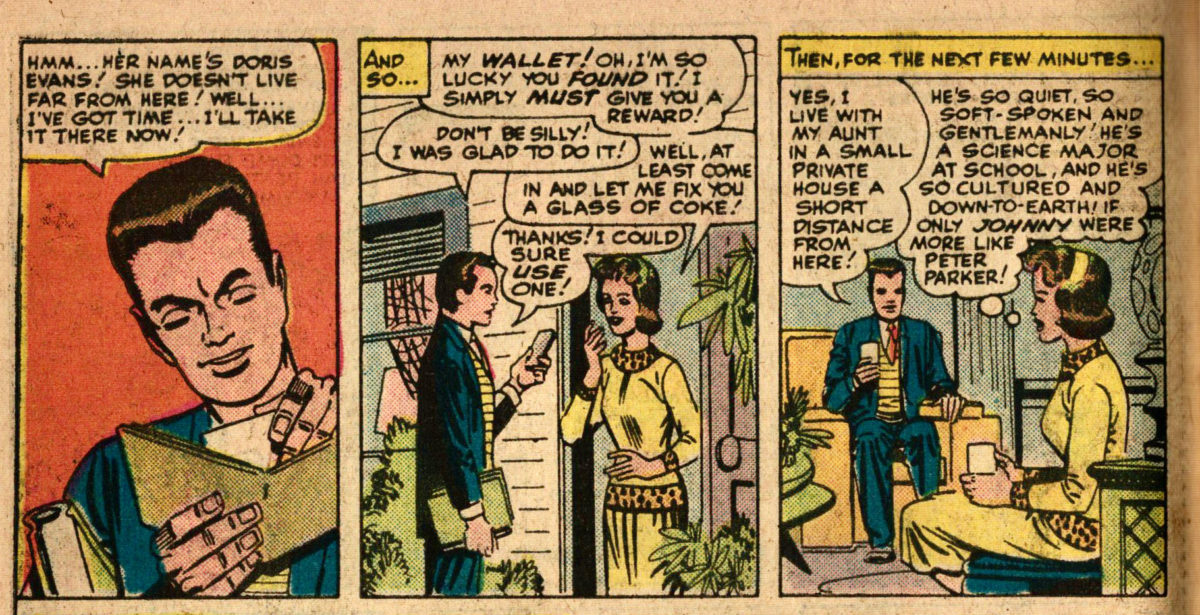Featuring: Thor
Release: September 1, 1964
Cover: November 1964
12 cents
Spectacularly written by: Stan Lee
Magnificently drawn by: Jack Kirby
Powerfully inked by: Chic Stone
Eventually lettered by: Art Simek
16 pages
| Previous | #276 | Next |
|---|---|---|
| Avengers #10 | Reading order | Journey Into Mystery #110, Story B |
| Journey Into Mystery #109, Story B | Journey Into Mystery | Journey Into Mystery #110, Story B |
This image of Thor holding the wounded Jane resembles an extremely common trope in superhero comics. It’s a standard way to depict a character as dead while another mourns them. This is the first time we’ve seen it in our Marvel reading. The Distinguished Competition had a cover with a similar pose a year earlier to depict the death of Robin.

Generally, these are described as “pieta covers”, referring to the resemblance to La Pieta by Michelangelo, in which Mary holds the body of her dead son, Jesus.

This blog post on metropolisplus gives an overview of the trope. Depending on how much of a purist you are, this Thor cover might not quite fit the pieta trope. As Jane is wounded, not dead; and Thor is protecting her, not mourning her. But it’s pretty close.






































